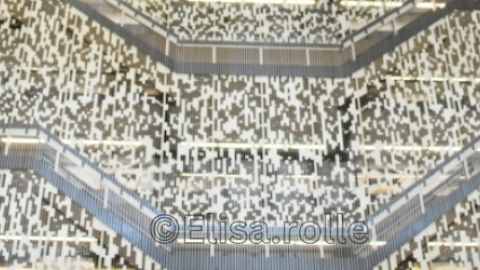Multi topological fields, approximations and NTP2
Abstract
(Joint work with S. Montenegro)
The striking resemblance between the behaviour of pseudo-algebraically closed, pseudo real closed and pseudo p-adically fields has lead to numerous attempts at describing their properties in a unified manner. In this talk I will present another of these attempts: the class of pseudo-T-closed fields, where T is an enriched theory of fields. These fields verify a « local-global » principle with respect to models of T for the existence of points on varieties. Although it very much resembles previous such attempts, our approach is more model theoretic in flavour, both in its presentation and in the results we aim for.
The first result I would like to present is an approximation result, generalising a result of Kollar on PAC fields, respectively Johnson on henselian fields. This result can be rephrased as the fact that existential closeness in certain topological enrichments come for free from existential closeness as a field. The second result is a (model theoretic) classification result for bounded pseudo-T-closed fields, in the guise of the computation of their burden. One of the striking consequence of these two results is that a bounded perfect PAC field with n independent valuations has burden n and, in particular, is NTP2.
Spin link homology and webs in type B
Abstract
In their study of GL(N)-GL(m) Howe duality, Cautis-Kamnitzer-Morrison observed that the GL(N) Reshetikhin-Turaev link invariant can be computed in terms of quantum gl(m). This idea inspired Cautis and Lauda-Queffelec-Rose to give a construction of GL(N) link homology in terms of Khovanov-Lauda's categorified quantum gl(m). There is a Spin(2n+1)-Spin(m) Howe duality, and a quantum analogue that was first studied by Wenzl. In the first half of the talk, I will explain how to use this duality to compute the Spin(2n+1) link polynomial, and present calculations which suggest that the Spin(2n+1) link invariant is obtained from the GL(2n) link invariant by folding. In the second part of the talk, I will introduce the parallel categorified constructions and explain how to use them to define Spin(2n+1) link homology.
This is based on joint work in progress with Ben Elias and David Rose.
13:00
What's done cannot be undone: non-invertible symmetries
Abstract
In massless QED, we find that the classical U(1) chiral symmetry is not completely broken by the Adler-Bell-Jackiw anomaly. Rather, it is resurrected as a generalized global symmetry labeled by the rational numbers. Intuitively, this new global symmetry in QED is a composition of the naive axial rotation and a fractional quantum Hall state. The conserved symmetry operators do not obey a group multiplication law, but a non-invertible fusion algebra. We further generalize our construction to QCD, and show that the neutral pion decay can be derived from a matching condition of the non-invertible global symmetry.


